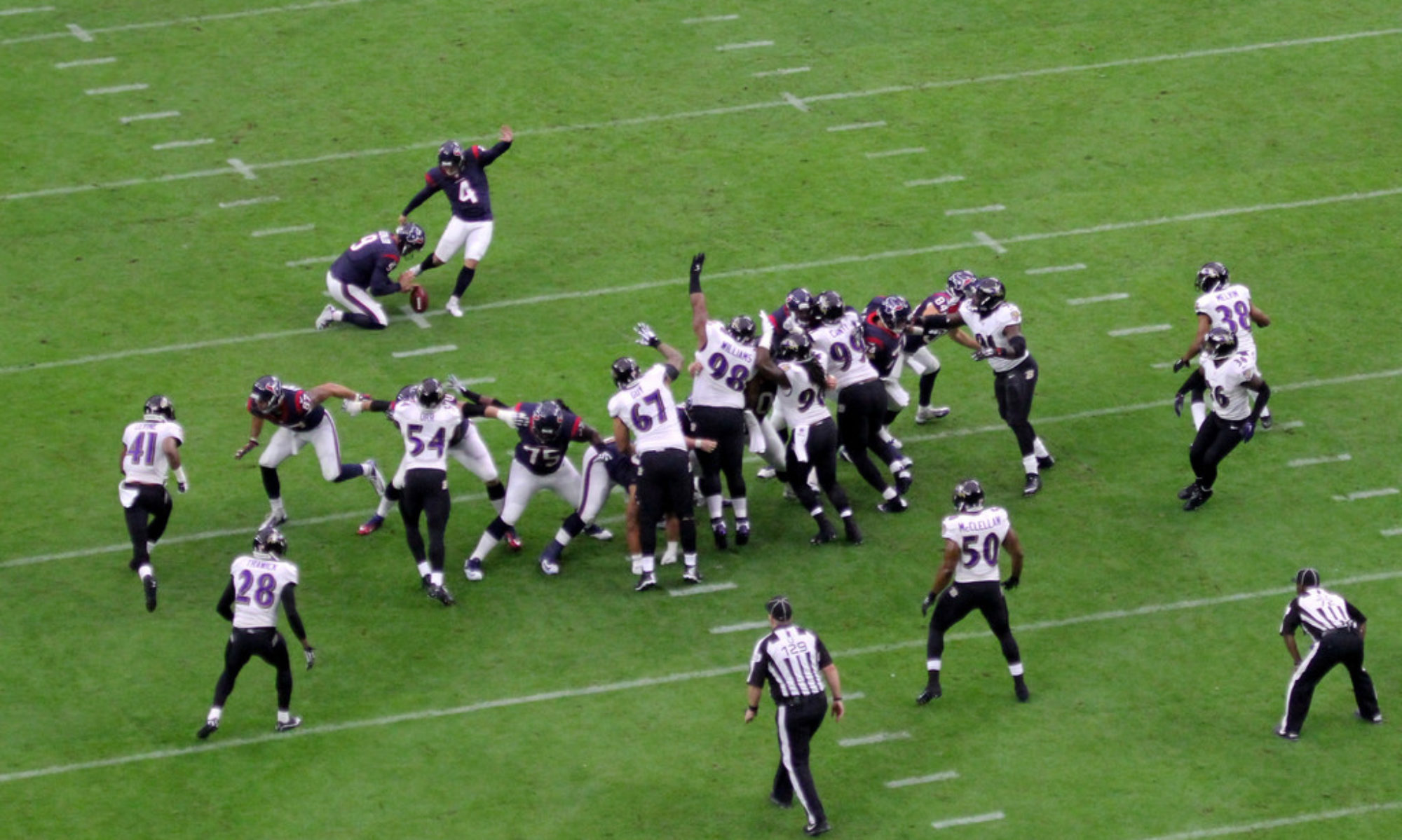
The worst-kept secret in the world was that the Texans were bereft of talent at tackle and cornerback coming into the offseason, then did little to help that in free agency. That essentially forced their hands in the draft, and so when the Texans came to their second-round picks with a tackle already selected, it made a lot of sense that a cornerback was coming off the board.
General manager Brian Gaine described Johnson as an “Outside cornerback with excellent height, weight, speed. Six-foot-one and change, 210 pounds, 4.40 (40-yard dash), played very well in the Senior Bowl and matched up versus some very good competition. Played very well in the Bowl game. Very aggressive in run support. He can play perimeter press coverage, can play man coverage.” Sometimes the PR world is funny because of the way it selectively omits things. The Texans used some Pro Football Focus stats in the article I’m quoting from to boost their other second-round pick, Max Scharping. They did not use any for Johnson.
Johnson’s athleticism is quite good for his size. He had a solid combine, with impressive percentiles among cornerbacks in jumps (90th in vertical, 72nd in horizontal), and pretty much held even across the rest of the board. Considering how big he is compared to most cornerbacks, again, that’s not a bad thing.
But Johnson’s college production wasn’t great — PFF has him allowing three touchdowns last season, with five missed tackles. For his college career, the passer rating against was 109.5. He only played big snaps in two seasons, and had zero career snaps before that. He was, despite Gaine’s words, a little tentative in run support.
One of those touchdowns allowed came against Vanderbilt, and showed that Johnson has some work to do with his strength in fighting for the ball at the catch point:
Another of them came against Texas A&M on the goal line, where I thought Johnson had pretty good coverage on an island but the throw was enough to beat it.
What I think the Texans liked about Johnson — and something I’m beginning to think is the No. 1 thing Houston coaches look for — is his ability to read-and-react on short balls. Check out what he did at the Senior Bowl:
Here’s a similar play that happened in-season, against Florida:
Every time I deep-dive a Texans CB acquisition, there’s at least some evidence of them reading in short zones and coming downhill aggressively to put a lick on someone. That’s a core trait for them, and Johnson fits that.
As for Johnson’s run support, well, I think his run fits are a little over-aggressive sometimes. He was taken advantage of numerous times by Georgia. I think his tackling form is a little finesse-based right now, and he’s got some poor tape. Basically, don’t expect him to replace Kareem Jackson in the run game right away:
I’ve got more video clips on Twitter of Johnson, but I don’t like when writers put out huge video pieces where you’re going back-and-forth from watching to reading. So, I lead with what I thought were big deals and you guys can comb through extra clips at your leisure.
Johnson also had some struggles pressing at the line of scrimmage, both against Georgia and against Penn State in the bowl game. (I do agree with Gaine that he played better in the bowl, though.) I thought he had problems with late movement. One of my least favorite plays, and one that makes me worry about his instant NFL fit, came against the Bulldogs. They motioned someone to bring Johnson across the line of scrimmage pre-snap, and ran one receiver in front of Johnson as a natural pick. Johnson actually curved so far around the receiver that there was about five yards of space. Johnson actually put a big lick on the receiver on this play, but that much free space in the NFL will get you crushed.
It’s hard to say exactly what Johnson will become because, for the most part, every rookie NFL cornerback is going to get whipped early. The ones that don’t are a) exceptions to the rule and b) usually top-20 draft picks. I wasn’t expecting an instant impact either way, but the more I dug into what I could find of Johnson, the more I think he won’t be more than a 500-snap player in 2019. He’s just got a lot of growth to find as a player to live up to what his body is able to do. I probably would have found someone a little bit more pro-ready if it were my board, but you can certainly understand why the Texans were tempted.
All three of Gaine’s top two rounds of choices were at the Senior Bowl, which is interesting to me. Maybe the Texans think seeing these players up close in a professional environment, and how they respond to coaching, is a big factor. Maybe they even think players that can take coaching easily are an inefficiency.
I am not going to tell you I think Johnson is a sure bust just because his college tape is inconsistent-to-poor. I think the Texans have a hypothesis worth disproving, and that the price for a player with this kind of body is about what the price will always be. Let’s hope it comes together. Let’s just also remember that Lance Zierlein’s NFL comp on Johnson was Tharold Simon, who started five games in his second season and never made it back into an NFL rotation after toe injuries wrecked his third season. Simon was regarded as somewhat of a disappointment compared to his raw tools.






